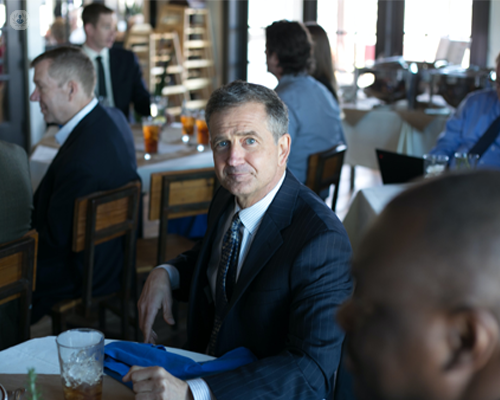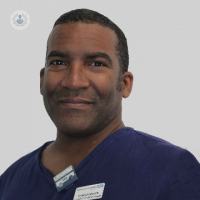The localised treatment of prostate cancer with prostate seed (LDR) brachytherapy
Autore:In this first article in a two-part series on prostate seed (LDR) brachytherapy, skilled consultant clinical oncologist Dr Albert Edwards shares his expertise on this cancer treatment. The Canterbury and Maidstone-based consultant clearly explains what LDR seed brachytherapy is, how it is different from other brachytherapy treatments, and how long it lasts.

What is prostate seed (LDR) brachytherapy? How does it work?
Prostate seed (LDR or low dose rate) brachytherapy is an established, curative treatment for localised prostate cancer. It is one of the options that exist alongside having an operation or having radiotherapy and hormone treatment.
LDR brachytherapy involves permanently implanting tiny radioactive seeds into the prostate gland. Each seed emits intense, short-range radiation to treat the prostate from the inside. Using short-range radiation enables the whole prostate to be treated to a high radiation dose, while the dose rapidly drops with increasing distance from the prostate, sparing nearby structures like the rectum and the nerve supply to the penis. External beam radiotherapy to the prostate delivers low or medium radiation doses through the whole pelvis on its way to focussing on the prostate gland.
Crucially, not everyone is suitable for brachytherapy. Also, not every radiotherapy centre in the country offers brachytherapy. Many patients will be seen at a cancer centre that does not perform prostate LDR brachytherapy. These patients may be offered a referral to a prostate brachytherapy centre if they are interested in and suitable for this treatment technique.
How does it differ from other forms ofprostate HDR brachytherapy?
To treat prostate cancer, there are two main forms of brachytherapy; seed brachytherapy or LDR, and the other form is temporary, high-dose rate, or HDR brachytherapy.
HDR brachytherapy differs from LDR or seed brachytherapy in that it is usually given in combination with radiotherapy from the outside to deliver the very highest doses to the prostate gland. As such, it tends to be used on higher-risk, more locally advanced prostate cancer that the cases that are suitable for seed brachytherapy alone.
Prostate LDR seed brachytherapy is permanent; the seeds are implanted permanently, giving off radioactivity. On the other hand, HDR brachytherapy involves inserting plastic tubes into the prostate using sharp needles under the guidance of an ultrasound probe in the rectum. Each of these plastic tubes is connected to a machine, which holds a tiny intense radioactive source. The radioactive source is attached to a cable controlled remotely by a computer and is driven to the end of each of the plastic tubes in the prostate in turn, delivering intense short-range radiation from the inside. When it's finished, the radioactive source returns to the machine, and the plastic tubes are removed. The radiation boost has been delivered to the prostate.
How long does LDR brachytherapy last? How long do the seeds remain active?
The radioactive material that is inside the seeds is called Iodine-125. Each seed is made of titanium, welded shut, and then has another titanium seed around it. There is no way for the Iodine-125 to leak out of the seed. The radioactivity is able to come through the seed, targeting the cancer. Iodine-125 has a half-life of roughly 60 days, meaning that every 60 days the radioactivity falls by half so that most of the radioactive energy is delivered in the first three or four months. When we are ordering the seeds, we have to know when they will be inserted into the patient. That way, we know that by the day they will be put in, they will reach the correct activity that’s been calculated for their treatment.
This is short-range radiation, as I mentioned the most important thing about brachytherapy is its ability to deliver a high dose to the prostate but a much lower dose to normal tissues away from the prostate. The dose of radiation you get on the skin is extremely low and is not a risk to other people. The Royal College of Radiologists recommends in the two months after you’ve just had your implant, you should keep more distance between yourself and people who are a bit more sensitive to radiation, such as children, pregnant women, or women who are breastfeeding. I tell my patients if they are looking after their children or grandchildren, rather than sitting them on their lap, I advise them to sit next to them.
This is part one of a two-piece series. In the next article, Dr Edwards looks at who is suitable for this treatment, what risks are involved, and what recovery can typically look like.
If you are interested in finding out more about LDR or seed brachytherapy for prostate cancer and would like to book a consultation with Dr Albert Edwards, you can do so directly by visiting his Top Doctors profile.


